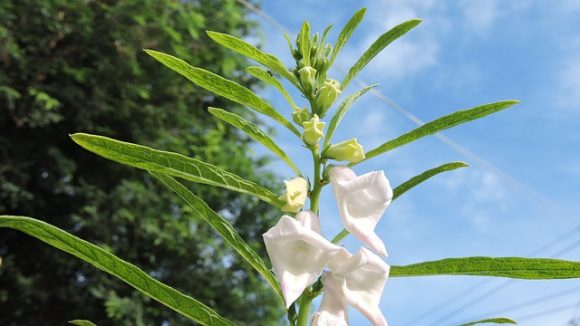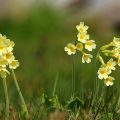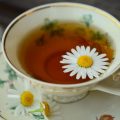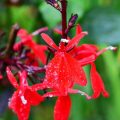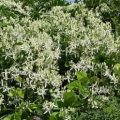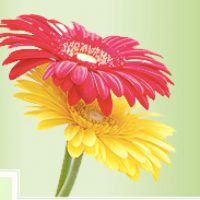- The Miraculous Shiny Bush Plant - January 18, 2021
- Colorful, Edible and Medicinal Celosia - January 10, 2021
- Radish, a Nutritional Power House - December 19, 2020
Sesame, benne, or sesame indicum, is a strong-scented, flowering plant
commonly cultivated as a food crop. It has dark-green leaves with
serrated edges. Benne produces white rose, or light purple,
bell-shaped blossoms with pink streaks or spots. The flowers give way
to small, sausage-like pods enclosing pear-shaped seeds. Though not
very common due to its high-value oil, sesame is sometimes grown as an
ornamental plant due to its beautiful blossoms.
[Note: The Right Flowers is not a medical site. Knowledge of and information about the therapeutic benefits and applications of flowers, while known through the ages, does not constitute medical advice. If you are having health issues, you should consult with a physician.]
The plant is thought to have originated from East Africa or Asia
before spreading to other regions of the world. Today, the plant is
commonly grown in Asia, the Americas, and Africa. Historical records
show that benne was widely cultivated in Babylonia, Egypt, and Greece.
Mesopotamian people are also known to have grown sesame about four
millennia ago.
While the crop is mostly grown for the seeds which produce the highly
sought-after oil, not many people know that sesame leaves and flowers
are edible and are also used for medicinal purposes.
The flowers are crushed and mixed with cow milk, and the resulting paste
used topically to clear black spots, pimples, and wrinkles. The paste
also enhances skin tone and hair growth. In addition, the flowers are
used in Ayurveda medicine to increase male vitality and sperm count.
Ancient Chinese civilizations utilized the oil from its seeds to make
ink while Romans ground the seeds alongside cumin to make a paste for
spreading on bread.
Sesame was highly valued for its oil in ancient civilizations such as
Assyria and Babylon. Today, China and India are the leading producers
of the plant.
Sesame oil has little flavor or odor. It resists turning rancid and is
considered quite stable. These qualities are what make it ideal in
cooking, salad oil, margarine, and shortenings. Basically, sesame
seeds contain 50 percent of oil and 20 percent of protein, about 25 percent of carbohydrates, and 5 percent of fiber. The seeds are commonly used to make candy and bakings.
Sesame was once thought to have mystical powers. This explains its
mention in the 18th century Middle Eastern folk collections known as
Arabian Nights tales. According to the popular bedtime story of Ali
Baba and the 40 Thieves “open sesame” is the magical phrase that opens
a cave where the forty thieves had hidden their treasure.
This phrase is probably based on sesame seed pods that burst open
with a popping sound when mature at the slightest touch. The sudden
popping sound of the pod as it opens up is similar to the sound of a
lock opening with a popping sound.
Its flowers resemble the blossoms of the devil’s claw plant
(proboscidea parviflor). The two plants are said to belong to the same
pedaliaceae family, but some botanists have continued to classify them
differently by classifying the devil’s claw in the martyniaceae.
Unlike most ancient plants that lost ground with modernization, sesame
has always been an important food crop that you should consider
growing in your garden for food, beauty, and herbal reasons.
